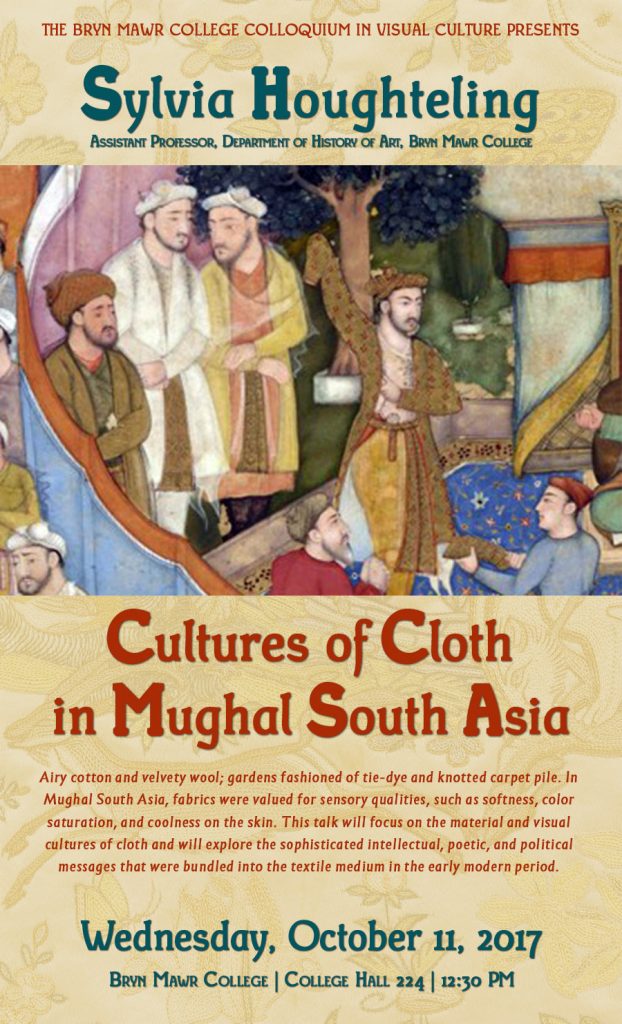Assistant Professor
Department of History of Art, Bryn Mawr College
“Cultures of Cloth in Mughal South Asia”
South Asian courtly ensembles worn by the greatest Mughal emperors were comprised not only of imported silks and cloth of gold, but also relatively inexpensive tie-dyed cloths made in Rajasthan and finely spun cotton muslins from Bengal. Court biographies, popular lexicons, and the letters sent from the Mughal court to its Rajput allies reveal that the fabrics used for dress in early modern South Asia were valued for sensory qualities, such as softness, saturation of color, and coolness on the skin, that went beyond the cost of the materials or the sophistication of the technology used to produce them. By exploring the ostensibly simpler fabrics of Mughal courtly culture, I reposition the study of cloth in early modern South Asia away from its current focus on the material wealth of imperial costumes to recover the sensory experience of wearing airy cotton and velvety wool, as well as the sophisticated intellectual, poetic, and political messages that could be carried in the fabric of a courtly coat.

